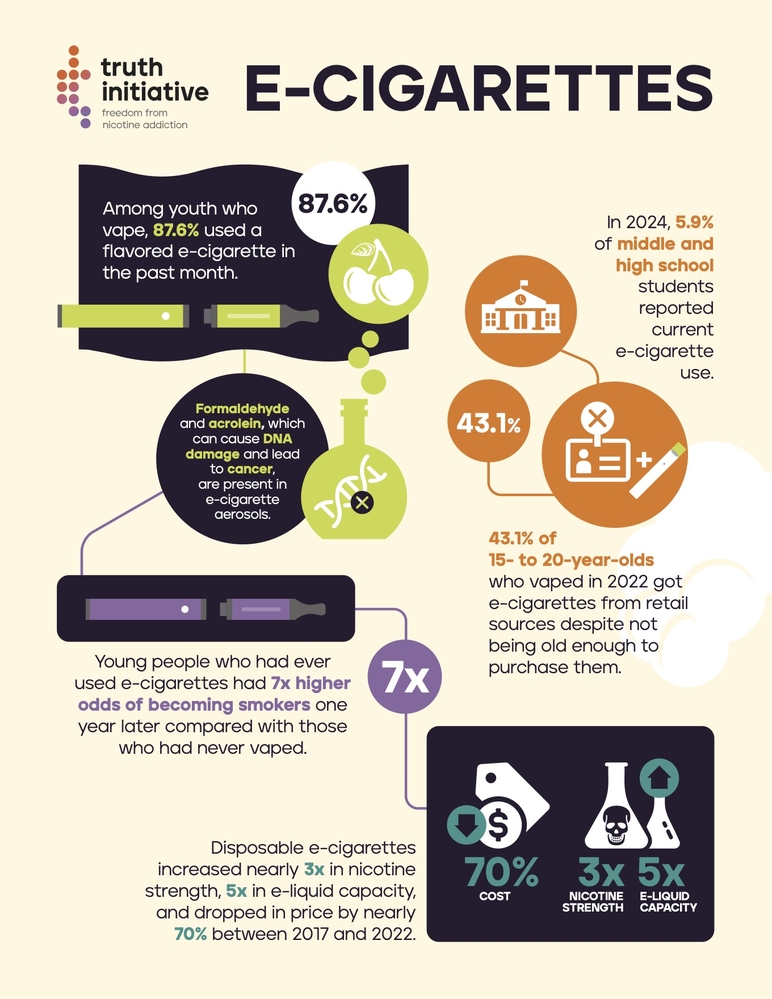Current scientific consensus indicates that no electronic cigarette is considered completely safe. While generally presenting less risk than continuing to smoke combustible cigarettes for adult smokers switching completely, all e-cigarettes carry inherent health risks and are not recommended for non-smokers, pregnant women, or youth.
Key Safety Concerns with Electronic Cigarettes
- Nicotine Addiction: Most contain highly addictive nicotine, harmful to adolescent brain development.
- Chemical Exposure: Aerosols contain ultrafine particles, volatile organic compounds (VOCs), heavy metals (e.g., nickel, tin, lead), and potentially carcinogenic compounds, even if levels are typically lower than in cigarette smoke.
- Flavoring Chemicals: Many flavorings, when heated and inhaled, can cause respiratory irritation or lung damage (e.g., diacetyl linked to “popcorn lung”). Safety data for long-term inhalation is limited.
- Unknown Long-Term Effects: Due to the relatively recent emergence of these products, the long-term health consequences remain largely unknown.
- Device Malfunction & Battery Risks: Rare incidents of battery explosions causing injury can occur.
- Youth Use & Gateway: Concern exists regarding e-cigarettes acting as a gateway to nicotine addiction and combustible tobacco use among youth.
Safety Differences Among Brands & Types
While no brand can claim absolute safety, significant differences exist impacting potential harm:

- Closed Systems (Pods, Cigalikes – e.g., Juul, Vuse, NJOY):
- Use pre-filled, often nicotine salt-based pods/cartridges.
- Generally considered more consistent in output than open systems.
- FDA has authorized specific Vuse and NJOY products as “appropriate for the protection of public health” under the Premarket Tobacco Product Application (PMTA) pathway. This means they are less harmful than cigarettes for adult smokers and meet specific regulatory standards, not that they are safe.
- Juul remains popular but faces regulatory scrutiny, especially regarding youth appeal; many flavors restricted in the US.
- Open Systems (Refillable Tank Mods):
- Allow users to fill with their choice of e-liquid.
- Risk factors increase with user choices: High-wattage devices generate hotter aerosols potentially containing more toxicants. Misuse or improper mixing can introduce contaminants.
- Liquids vary enormously in quality and composition.
- Generally have fewer PMTA authorizations compared to closed systems.
- Disposable Vapes:
- Often very high nicotine content (salt or freebase).
- Widespread issues with illegal imports, counterfeit products, lack of age verification.
- Significant environmental concerns due to batteries and plastic waste.
- Very limited regulatory oversight; high risk of inconsistent quality and contamination.
Important Considerations & Facts
- FDA Authorization ≠ Safe: Authorization signifies reduced harm compared to cigarettes for existing adult smokers who switch, based on extensive scientific review. It absolutely does not mean the product is safe overall or safe for non-smokers.
- “Harm Reduction” Context: E-cigarettes are primarily discussed as potential harm reduction tools only for adults unable or unwilling to quit nicotine entirely and who would otherwise smoke. Complete cessation of all tobacco/nicotine products remains the safest option.
- EVALI Lung Injury: Primarily linked to vitamin E acetate in THC-containing vaping liquids, particularly from the illicit market. While not primarily associated with legal nicotine-only products, it highlights the risks of unregulated substances entering the lungs.
- Dual Use is Harmful: Using both e-cigarettes and combustible cigarettes simultaneously offers little health benefit and maintains high risk.
Conclusion: No electronic cigarette brand can be deemed “safe.” Authorized products like specific Vuse or NJOY devices represent potentially reduced-risk alternatives for adult smokers compared to continuing to smoke, under strict regulation. However, significant health risks, particularly from nicotine addiction and unknown long-term effects, persist for all users. Disposables pose significant quality and environmental issues. Non-smokers, especially youth, should never start using e-cigarettes.










